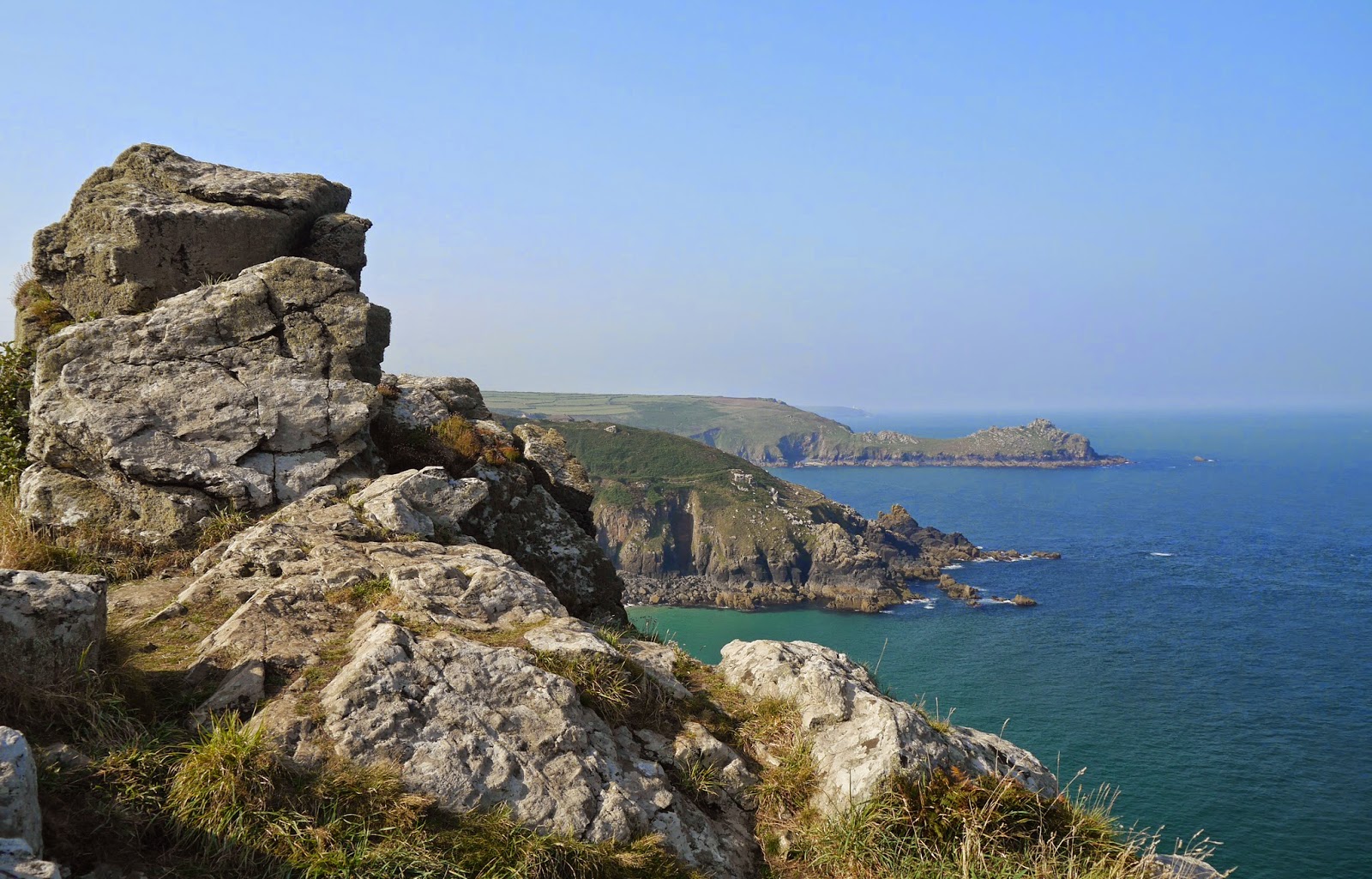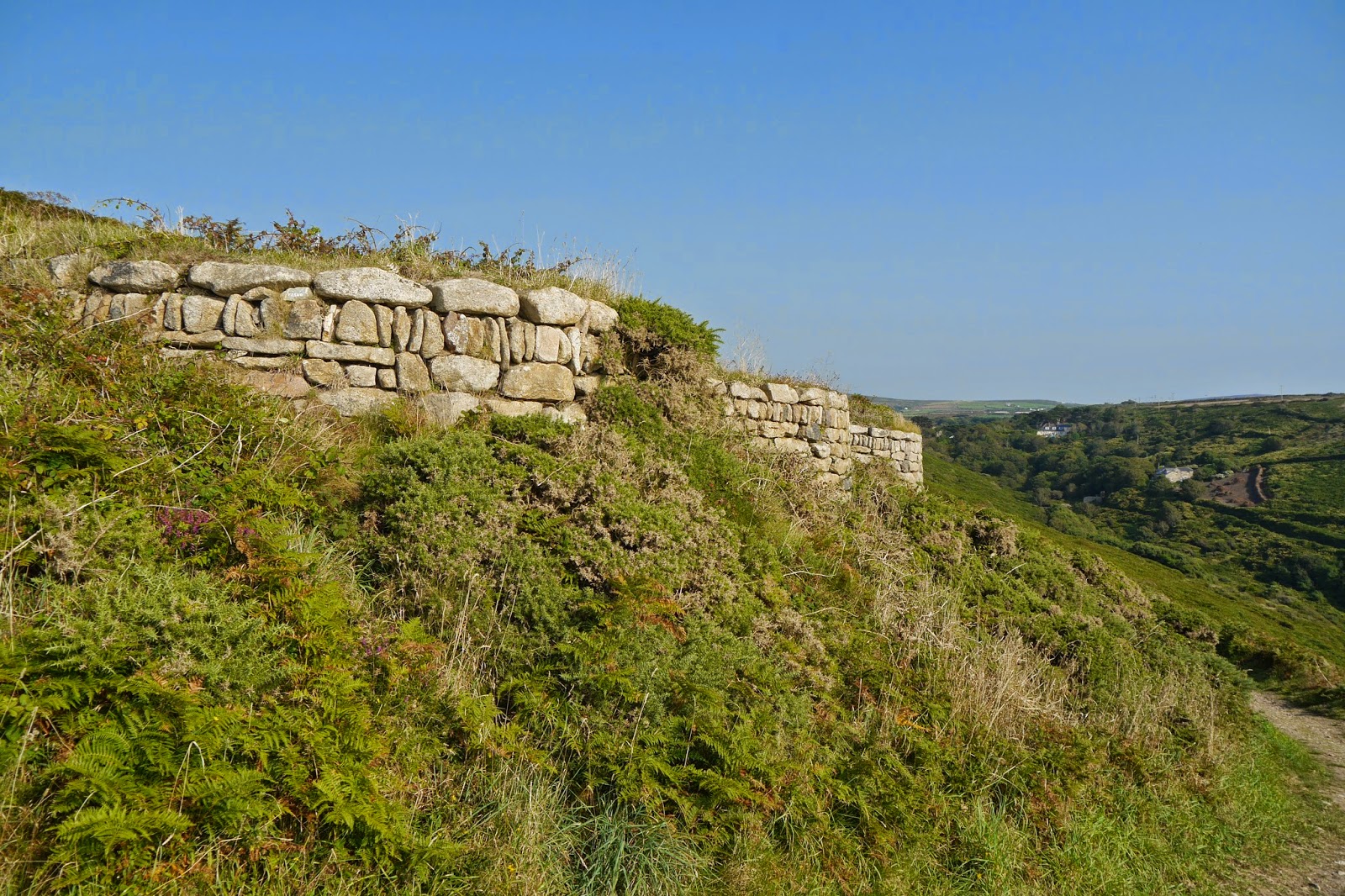One of the features of this section of the coast path is that there are no settlements at all on the coast, so you have to start from somewhere a bit inland. Today we are starting from the hamlet of Zennor, which does boast an excellent pub and a handsome church.
We walk less than a half mile to reach the coast and enjoy fine views to the west past Pendour and Veor coves towards Gurnard's Head.
Ahead lies Zennor Head, with fine rock formations behind the carpet of heather and broom.
The view west from the Head is quite inspiring. Pendeen Watch is just visible on the horizon, to the left of Gurnard's Head.
Once you turn the Head, the view forward is of inaccessible sandy beaches. The terrain becomes increasingly rocky and laborious. There was however a sustained stream of people coming towards us, making this one of the busiest sections of path since Looe to Polperro, almost exactly a year ago.
The next section is a bit easier walking as we pass inland of Carn Naun Point, Pen Enys Point and Hor Point.
As we descend towards the near sea level Clodgy Point there is a wonderful view of St Ives, with Porthmeor Beach prominent and The Island to the left. St Ives Bay can be made out in the background.
Once we reach St Ives, we start with a delightful lunch at the Porthmeor Beach Cafe and then visit the Tate. I am not really a fan of abstract art and I must confess that I found the collection rather a disappointment: it is hard to understand why some of these daubs are superior to others. The building is quite impressive though, with its dramatic peristyle entrance.
We walk around the Island and pass Porthgwidden Beach.
Then we head down to the harbour. Reaching the West Pier we are entertained by some young people unaccountably jumping into the sea. There is a nice view across the harbour towards Smeaton's Pier.
Smeaton's Pier was built between 1667 and 1670, and was lengthened, and the new lighthouse added, in the 1890s. John Smeaton, the first man to call himself an engineer, was also the designer of the Eddystone Lighthouse which we encountered rebuilt on Plymouth Hoe.
We head inland a little to see the church of St Ia, consecrated in 1434. Its fine tower is a local landmark.
Soon afterwards we reached the fine sandy Porthminster beach before finishing our walk at the railway station.
There was a great view back over the harbour in the evening sunshine.
Conditions: warm and sunny.
Distance: 6 miles (distance now covered 397.2 miles).
Map: Explorer 102 (Land's End).
Grading: Severe.
Rating: four and a half stars.






































